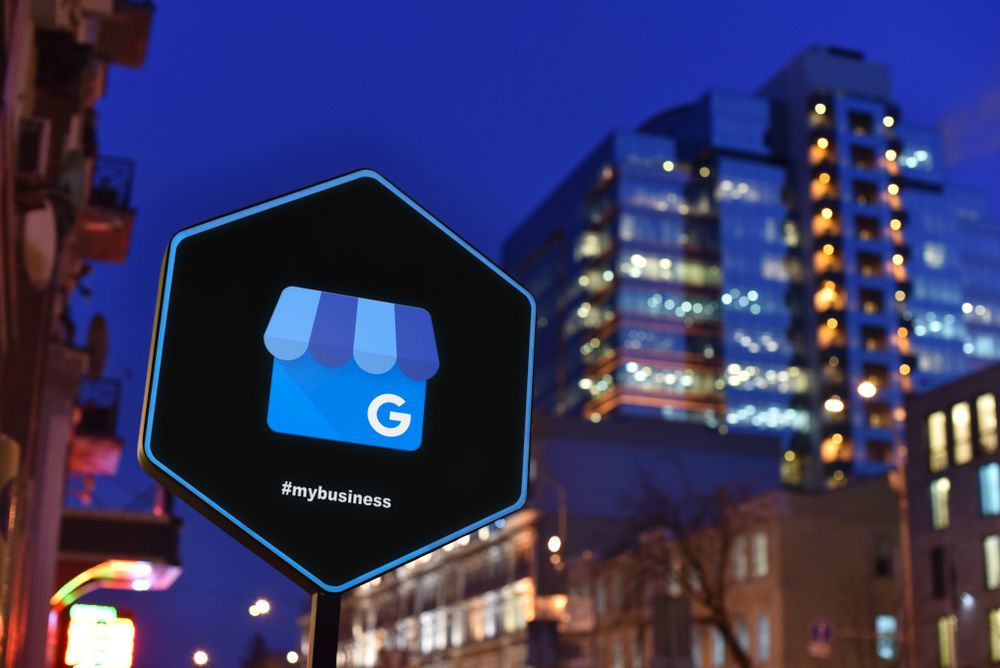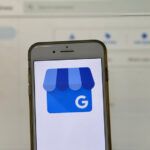
You feel like your business is invisible, don’t you? You’ve built something incredible, but new customers can’t seem to find you. It’s like shouting into a canyon and only hearing an echo. You’re trying to figure out how to add business to google local because you know that’s where your customers are looking.
This isn’t just about getting a pin on a map. It’s about showing up when someone needs you the most. When they type “coffee shop near me” or “emergency plumber,” you need to be there. This guide will walk you through exactly how to add business to google local, step by step, turning your digital whisper into a clear, confident voice.
Table of Contents:
- Why You Absolutely Need to Get Your Business on Google
- Getting Started: The Basics You Need Before You Begin
- Your Step-by-Step Guide for How to Add Business to Google Local
- Find or Create Your Business
- You’re Verified. Now What? Optimizing Your Profile for Success
- Common Roadblocks and How to Get Past Them
- Conclusion
Why You Absolutely Need to Get Your Business on Google
Think about the last time you looked for a local service. You probably grabbed your phone and performed a search on Google. Your potential customers are doing the exact same thing every single day, and if your business isn’t listed, you might as well not exist to them.
A Google Business Profile puts you on the map, literally. It acts as your digital storefront, open 24/7 and providing a crucial first impression. This online presence is your opportunity to connect with people actively looking for what you offer, right in your neighborhood.
Being visible in local search results on Google Maps and the search engine results page is a massive advantage for any small business. Studies show that a huge percentage of local searches lead to a store visit or purchase within 24 hours. This translates to free traffic and direct leads for your business, making it a powerful digital marketing tool.
Your business profile allows you to share vital business info, showcase customer reviews, and post regular updates. This builds credibility and trust before a customer even contacts you. It is a cornerstone of any effective local SEO strategy, helping you compete with larger businesses in your area.
Getting Started: The Basics You Need Before You Begin
Before you jump in, let’s get your information organized. Having this ready will make the setup process much smoother and faster. Think of it as your pre-flight checklist for launching your business into the local search spotlight.
You’ll need a few key pieces of information for your business listing. This isn’t complicated, but having it correct and consistent across all platforms is very important for search engine optimization. Here’s a list of what you should gather:
- Your official business name as it appears on your signage and legal documents.
- Your physical address if you have a physical location customers can visit.
- A complete list of your service areas if you’re an area business that travels to customers.
- Your primary business phone number and an official email address.
- Your business website URL, which connects your profile to your main online hub.
- The best primary business category for what you do (e.g., “Italian Restaurant,” not just “Restaurant”).
- A short, compelling business description that highlights what makes you special.
This basic business info, often called your NAP (Name, Address, Phone Number), needs to be consistent everywhere online. This consistency builds trust with both Google and your customers. Getting it right from the start saves you a lot of headaches and improves your local search ranking down the road.
Your Step-by-Step Guide for How to Add Business to Google Local
Alright, you have your information ready to go. Now we can get into the actual steps to create your Google Business Profile. It’s a straightforward process, so just follow along as we go through it together.
We are going to walk through the entire process, from creation to verification. I’ll point out the important parts and what you need to pay attention to. This process puts you in control of your maps listing and how your business stays visible online.
- Head to the Google Business Profile Page First, open your web browser and go directly to google.com/business. This is the official starting point for creating and managing all Google Business Profiles. You will see a prominent button that says “Manage now.” You will need a Google account for this. If you already use Gmail, Google Drive, or another Google service for your business, you should use that Google account to sign in. Keeping all your business tools under one account simplifies management.
- Find or Create Your Business Next, you’ll type in your business name in the search bar. As you type, Google will check its existing database to see if a business profile already exists. Sometimes, a profile is automatically created from other online directories or customer suggestions. If your business name appears, you can click on it to claim and manage the existing listing. If it doesn’t appear, you will see an option to “Create a business with this name.” Most new small business owners will select this option to build their business account from scratch.
- Choose Your Business Type This part is important because it tells Google how your business operates and interacts with customers. You’ll be asked to choose between a few options that describe your business model. This selection determines what features will be available on your profile. Your choices will generally be: Business Type Description Example Local Store A physical storefront or office that customers can visit during business hours. Bookstore, cafe, doctor’s office. Service Business You travel to your customers’ locations to provide services. Plumber, landscaper, mobile pet groomer. Online Retail You sell products or provide services online without a physical location for customers. E-commerce store, online consultant. Select the one that best describes how you serve your customers. Some businesses are hybrids (e.g., a restaurant with a physical location that also delivers), and you can set up your profile to reflect that as you move forward.
- Select Your Business Category Now, you need to tell Google exactly what you do. Start typing your primary service, like “Hair salon” or “Accountant,” into the category field. Google will provide a list of pre-set categories to profile choose from. Be as specific as possible with your primary business category, as this has the most weight in search rankings. You can add several secondary categories later on to cover all the services you offer. According to Google’s own guidelines, this helps connect you with customers looking for the specific custom services you provide.
- Add Your Location Details If you selected local store as your business type, you will enter your full business address here. Make sure it’s 100% accurate, including suite numbers or building details. Google will use this physical address for the verification process later. If you’re a service area business, you won’t have to display a physical address on your Google Maps business listing. Instead, you’ll specify the neighborhoods, cities, or regions you serve. This creates a shaded service area on the map so potential customers know if you can come to their business location or home.
- Enter Your Contact Information Customers need to know how to reach you. In this step, add your main business phone number and your business website address. Having a website is highly recommended for building trust and providing more information. If you don’t have a website, Google gives you the option to create a simple, free one based on your profile information. While this is a good temporary solution, having a dedicated business website offers far more control and branding opportunities. At a minimum, an accurate phone number is absolutely essential for your contact details.
- Complete the Verification Process This is the final and most critical step in setting up your profile. Google needs to confirm that your business is real and located where you say it is. This verification process prevents fake listings and protects the integrity of search Google Maps. The most common verification method is by mail. Google will send a postcard with a unique code to your business address, which usually arrives in 5-7 business days. Once you receive it, you’ll log back into your Google Business Profile dashboard and enter the code to complete the verification. Depending on your business type and history, you may be eligible for other methods like verification by phone call, text, email, or a live video call. Google will present the options available to you. Your profile won’t be fully live and visible in all local searches until you complete this step.
You’re Verified. Now What? Optimizing Your Profile for Success
Getting verified is a huge milestone, but the work isn’t done. The real journey of attracting customers begins now. A bare-bones profile is okay, but a rich, detailed, and active one stands out from the competition and ranks higher in local search.
Think of your Google Business Profile as a living part of your business. You need to keep it updated with fresh content and information. This signals to the search engine that you are active, relevant, and engaged with your community.
Start by going through your profile dashboard and filling out every single section completely. Add your business hours, upload high-quality photos, and write a compelling business description. You should also explore features like the messaging option, which allows customers to chat with you directly from your maps listing.
Using Google Posts is another fantastic way to optimize your profile. You can share updates, events, and special offers directly on your listing. Finally, actively encourage and manage Google reviews from your satisfied customers, as this social proof is a powerful ranking factor.
Common Roadblocks and How to Get Past Them
Sometimes, the process doesn’t go as smoothly as planned. You might run into a snag or two along the way. Don’t panic; most problems that small business owners face have a clear solution.
What if your verification postcard never arrives? You can log back into your profile after a couple of weeks and request a new one. Before you do, double-check that your address was entered correctly, including any suite or unit numbers.
Another issue can be a suspended profile. This usually happens if you accidentally violate one of Google’s rules, such as stuffing keywords into your business name or using a P.O. Box as your address. If this happens, you need to read the guidelines carefully, fix the issue, and then submit a reinstatement request through your profile dashboard.
Dealing with negative customer reviews can also be tough. The best approach is always to respond politely and professionally. Offer to resolve the problem offline and show other potential customers that you take feedback seriously and are committed to providing great service. This adds a personal touch that builds trust.
Conclusion
Getting your business on Google isn’t just a good idea; it’s a fundamental part of running a local business in today’s digital world. Following this guide on how to add business to google local gives you a direct line to customers who are actively looking for the products and services you offer. It’s a powerful tool for boosting your online visibility, and the best part is that it’s completely free.
The straightforward process just takes a little time to set up and manage correctly. A well-optimized Google Business Profile can become one of your most effective marketing assets, driving foot traffic and phone calls. Now you have the roadmap, so go get your business on the map and start connecting with your local customers.












